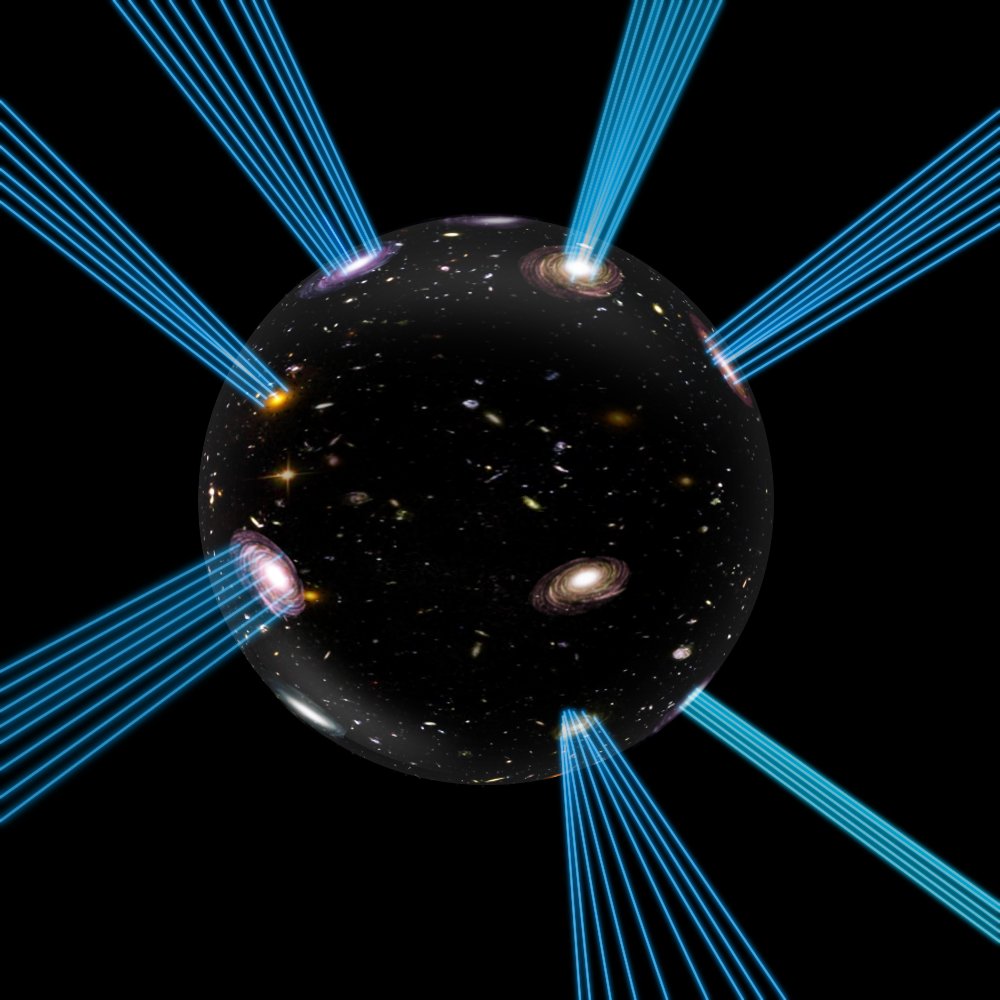English translation below.
Idag publicerar Physical Review Letters vår nya teori om universums mörka energi. För teoretisk fundamental fysik är PRL den mest prestigefulla tidskriften (Nature och Science kan i sammanhanget jämföras med Hemmets Journal). Artikeln omnämndes i somras av Scientific American i en intervju om den nya krisen inom strängteorin.
I korthet går det ut på att hela vårt universum rider på randen av en bubbla som expanderar i en extra dimension. Det ser ut ungefär så här:

Vårt universums tre rumsdimensioner svarar mot randen av bubblan, medan radien av den växande bubblan är den extra dimensionen. Liknande bilder av vårt universum kan man hitta i den populärvetenskapliga litteraturen men vad vi visar är att det bokstavligt kan vara sant om man har koll på sin strängteori. Av strängteorins nio rumsdimensioner måste fem vara riktigt små och ihoprullade medan fyra hyfsat stora för att det skall fungera. Den fyrdimensionella (eller femdimensionella om man räknar in tiden) rymden är instabil och här och var bildas bubblor som börjar växa. Detta svarar mot ett universum som föds. Det märkliga med modellen är att bubblorna expanderar på ett sådant sätt att den som rider på randen får för sig att det finns en mörk energi. Egentligen handlar det bara om en effekt av den extra dimensionen.
Men hur är det med de underliga dödsstjärneliknande strålarna på bilden? För att allt skall fungera måste den materia som du, jag och stjärnorna består av utgöras av strängar som sträcker sig ut i den extra dimensionen. Deras ändpunkter på bubblan tolkar vi som fundamentala partiklar typ kvarkar och elektroner.
Och varför skall man tro på detta? För att det ser ut att fungera och att andra alternativ inom strängteorin inte längre verkar hålla ihop. Nästa steg blir att kontrollera alla matematiska detaljer och hitta sätt att testa teorin mot observationer…
In English:
Our universe rides a dark bubble in an extra dimension
Today, Physical Review Letters publishes our new theory about the dark energy of the universe. For theoretical fundamental physics, PRL is the most prestigious journal (Nature and Science can in this context be compared to The Sun). The article was mentioned this summer by Scientific American in an interview on the new crisis in the string theory.
In short, our universe rides on the boundary of a bubble that expands into an extra dimension. It looks like this:

Our three space dimensions correspond to the boundary of the bubble, while the radius of the growing bubble is the extra dimension. Similar images of our universe can be found in the popular science literature, but what we show is that it can literally be true if you believe in string theory. Of the nine space dimensions of string theory, five must be really small and rolled up while four fairly large for it to work. The four-dimensional space (or five-dimensional if you include time) is unstable and here and there bubbles are formed that begin to grow. This corresponds to the birth of a universe. The marvelous thing about the model is that the bubbles are expanding in such a way that the rider on the bubble observes dark energy. Actually, it’s just an effect of the extra dimension.
But what about the strange death-star-like rays in the picture? For everything to work, the matter that you, me and the stars consist of must be strings that extend out in the extra dimension. We interpret their end points on the bubble as fundamental particles like quarks and electrons.
Why should you believe in this? Because it seems to work and that other options within string theory no longer seem to hang together. The next step is to check all mathematical details and find ways to test the theory against observations …